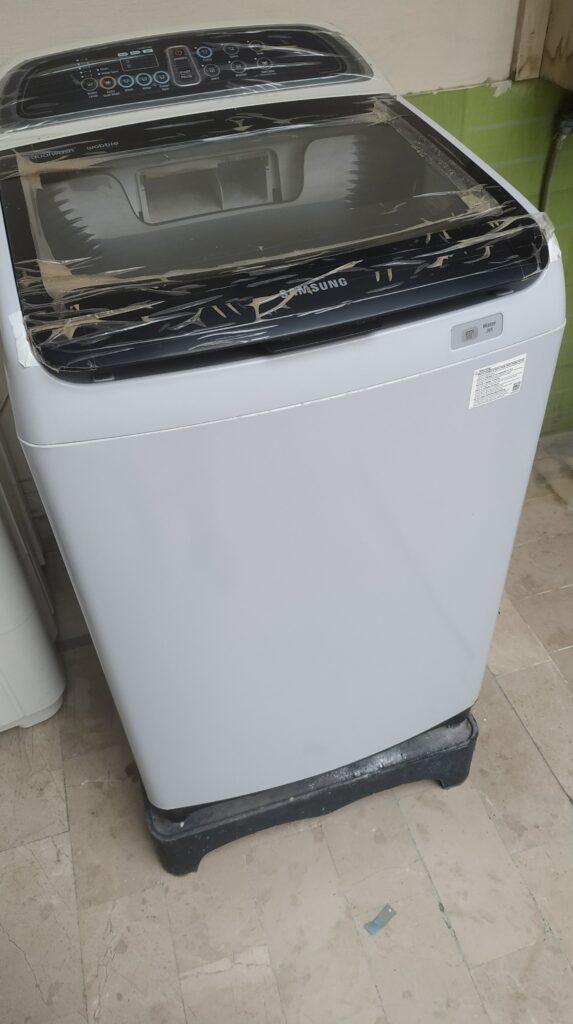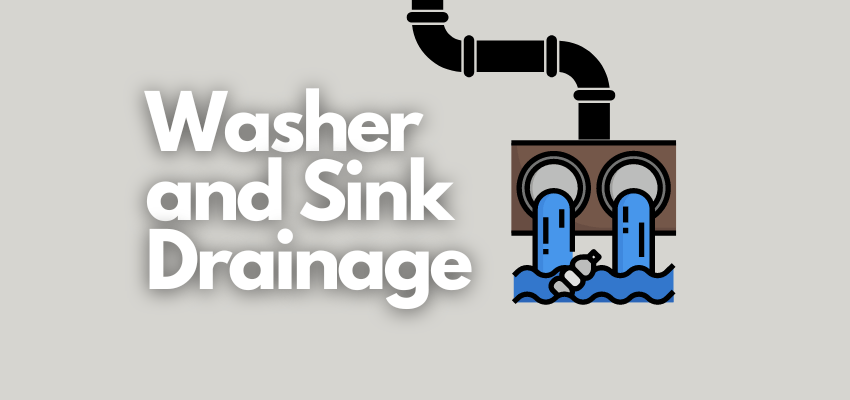Table of Contents
Last Updated on: 2nd July 2023, 03:37 pm
Homeowners often wonder if it’s possible for a washer and sink to share a drain, optimizing the use of existing plumbing systems. Remember that when it comes to plumbing, efficiency, and functionality are key factors to consider.
I have first-hand experience with this. Of course, it was the plumber who did this for me, but I have seen it.
| Disclaimer: As an Amazon Associate, I earn from qualifying purchases. |
When we installed our first-ever automatic washer in the laundry area, we had to share the water supply line between the sink and the washer.

Since our Samsung automatic washing machine requires a constant flow of water supply and we aren’t supposed to cut off the water supply. On the other hand, with a sink, you can turn off the faucet. So it was a no-brainer.
In this blog post, we will delve into this topic, discussing the considerations, challenges, and potential solutions that arise when contemplating a shared drain for a washer and sink.
Understanding the Basics
Before diving into the specifics, let’s establish a basic understanding of how plumbing systems work.
In a typical residential setting, each plumbing fixture, such as sinks, toilets, and washing machines, is connected to its dedicated drain line. These drain lines are interconnected within the plumbing system, ultimately leading to the main sewer or septic tank.

- STEAM WASH STAIN REMOVAL
- SUPER SPEED WASHING
- VIBRATION REDUCTION TECHNOLOGY+
- SMART CARE
- SELF CLEAN
- DIAMOND DRUM INTERIOR
- ENERGY STAR CERTIFIED

- ONE MACHINE, TWO WASHERS
- LAUNDRY JUST GOT SMARTER
- SUPER SPEED WASHING
- CONTROL with Wi-Fi
- FIT MORE FOR FEWER LOADS
- GENTLY REMOVE STAINS
Considering a Shared Drain
While it is possible for a washer and a sink to share a drain, there are several important factors to consider before proceeding. These factors include plumbing codes, capacity limitations, and the potential for backups or clogs.
- Plumbing Codes and Regulations: The first step in determining the feasibility of sharing a drain is to consult local plumbing codes and regulations. These guidelines ensure that plumbing systems meet safety and sanitation standards.
Some jurisdictions may prohibit shared drains, while others may have specific requirements in place. It is crucial to adhere to these regulations to avoid any legal or safety issues. - Capacity Limitations: Both washers and sinks generate wastewater, but the volume and flow rate can differ significantly. Washers release a large amount of water during the draining cycle, especially during the spin cycle.
On the other hand, sinks produce smaller volumes of wastewater at a slower pace. When considering a shared drain, it is important to ensure that the drain can handle the combined flow without backing up or causing drainage issues. - Backups and Clogs: Sometimes, washing machines stop draining due to clogging. Sharing a drain between a washer and sink increases the risk of backups and clogs. Washers can deposit lint and debris into the drain, potentially causing blockages when combined with sink waste. Additionally, different detergents and chemicals used in sinks and washing machines can interact, leading to clogs or pipe corrosion. Proper maintenance and regular cleaning become even more critical in a shared drain system.
Potential Solutions
If local regulations allow for shared drains and after careful consideration of capacity limitations and potential issues, there are a few possible solutions to explore.
Installing a Larger Drain Pipe
One option is to replace the existing drain pipe with a larger diameter pipe. A larger pipe can handle the increased flow from both the washer and sink, reducing the likelihood of backups or clogs. However, this solution may require professional assistance to ensure proper installation and compliance with plumbing codes.
Utilizing a Drainage Air Gap
Another solution is to incorporate a drainage air gap into the plumbing system. A drainage air gap is a physical separation between the washer and sink drain lines. It prevents backflow from one fixture to another, reducing the risk of contamination and clogs. This solution may require modifying existing plumbing configurations and should be carried out by a licensed plumber.
Creating Separate Drain Lines
If feasible, creating separate drain lines for the washer and sink is a reliable option. This ensures dedicated drainage for each fixture, minimizing the chances of backups and clogs. Although it may involve additional plumbing work and costs, separate drain lines offer peace of mind and can prevent potential issues down the line.
Let’s Conclude this!
While it is possible for a washer and the sink to share a drain, careful consideration and adherence to plumbing codes and regulations are crucial. Capacity limitations, backups, and clogs must be addressed to ensure a functional and efficient plumbing system.
Depending on local regulations and individual circumstances, options such as installing a larger drain pipe, incorporating a drainage air gap, or creating separate drain lines can be explored.
However, it is always recommended to consult with a professional plumber who can assess the specific plumbing setup and provide the most suitable solution.
Remember, the plumbing system is a vital component of your home, and any modifications should be carried out with proper knowledge and expertise. Attempting DIY solutions without proper understanding can lead to costly repairs, potential damage to the plumbing system, or even compromise the safety and functionality of your home.


